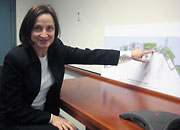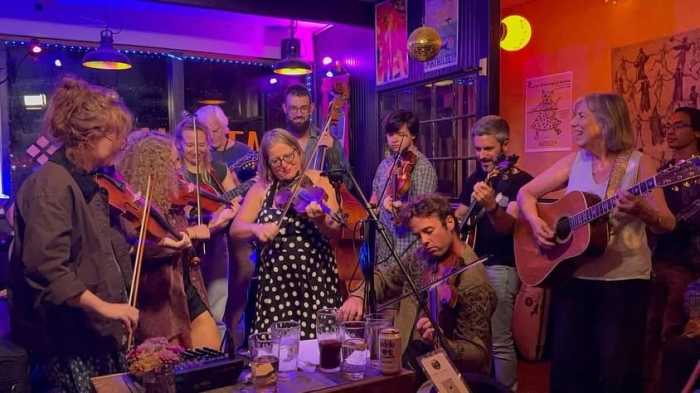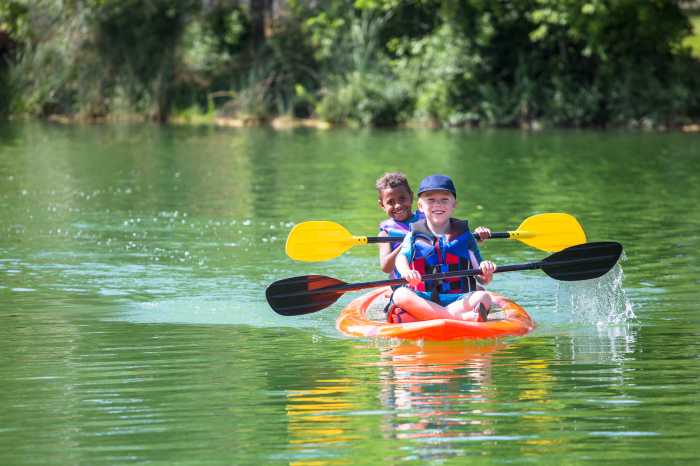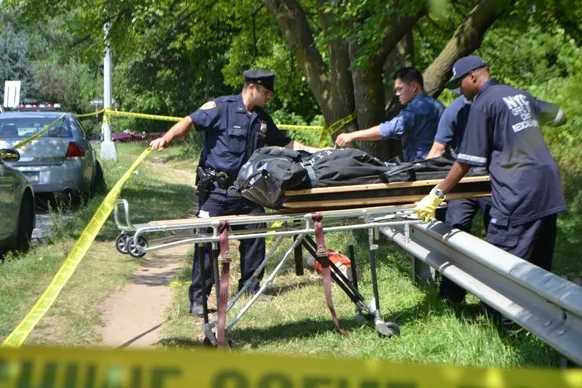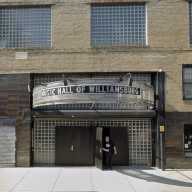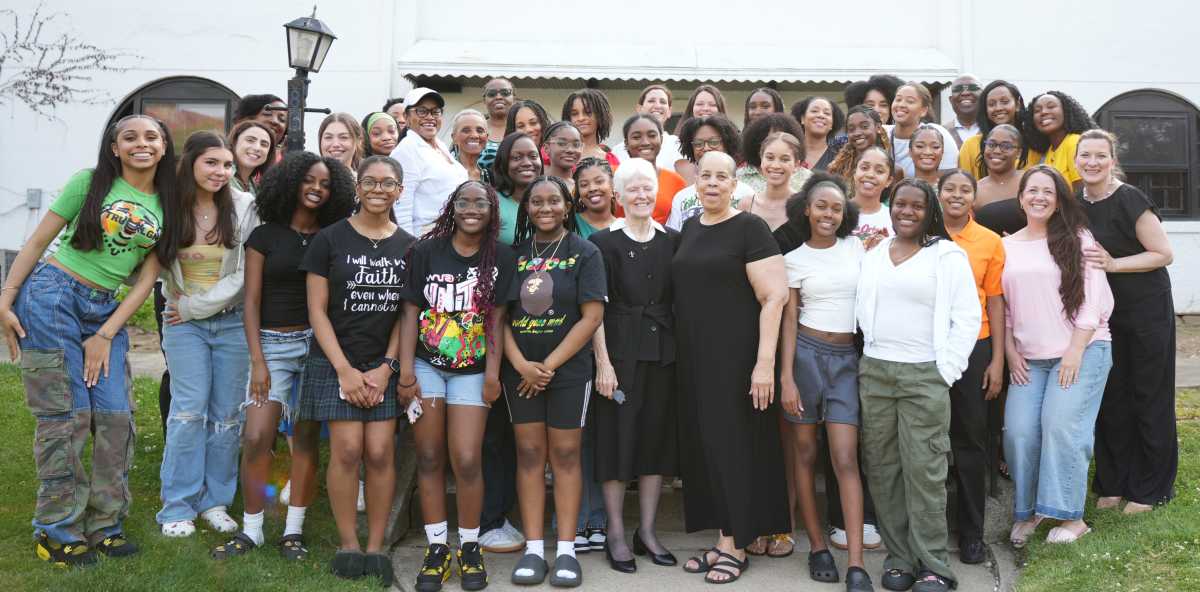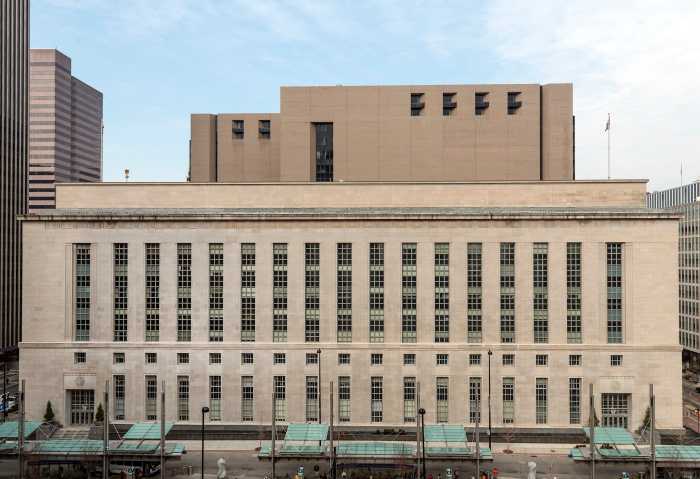Demolition work has finally begun at the site of Brooklyn Bridge Park — the 85-acre open space and condo development along the East River in DUMBO and Brooklyn Heights — following its third official groundbreaking since 2001. Unlike previous photo ops in 2001 and 2007, the city held a clandestine ceremony last month at which crews began razing warehouses as the first step towards building elements of the project. With the demolition work ongoing, Regina Myer, the new president of the Brooklyn Bridge Park Development Corporation, checked in with our Mike McLaughlin to give a status report and explain some of the project’s more controversial elements (including private security guards). Read on!
Q: Let’s start with an update on the project.
A: The [General Project Plan] was approved in 2006 and at the end of 2007, the board of directors of Brooklyn Bridge Park Development Corporation approved the first hard costs for construction. For the next six to nine months [Skanska, a construction company] has been engaged to perform site preparation, which is mainly the archaeological testing, as well as any test pits for any hazardous materials, and, I think most notably, the demolition of the pier sheds. Then, of course, there’s the demolition of the Purchase building. Those are the major activities of the next six to nine months. We really hope to get significant parts of this park open by next year.
Q: With state and city budgets in flux how can you guarantee that everything’s going to happen according to plan?
A: There was $150 million allocated for this park, those funds are still available. They’re a combination of funds from the Port Authority and from the city. The other good news is that the city has already put an additional $75 million in its preliminary budget. I hope that the combination of those two will permit us to get the project underway.
Q: What’s driving the costs up?
A: Since the project was originally conceived in 2000, three major things have happened. Number one, the project site was enlarged extensively — there was no Pier 6 in the park, for instance. Nor was there a major gateway at Atlantic Avenue. Also, there was no construction cost associated with Pier 5, because that was originally conceived as a location for commercial recreation a la Chelsea Piers. It was found that was not feasible at the site for two reasons: the shed was not built like the Chelsea Piers shed and it wasn’t an economically sound plan. Also, there was more commercial use on Pier 1, which had a restaurant and a meeting room center.
Q: Can you guarantee there won’t be more housing if there’s a need for more money to maintain the park?
A: Obviously, the [General Project Plan] was very, very clear that it would only permit development in the locations that were specified. We cannot develop any more commercial activity except at those locations. That’s the letter of the law. The only way that could be changed is if there was a revision to the GPP.
Q: But how do you know that property tax money coming from the private development will be enough to cover the park’s operating costs?
A: I just got here in December and have sat down with twice so far with [landscape architect and urban designer] Signe Nielsen who devised the budget. She’s asked for an appropriate amount of time to reevaluate and I have not seen that yet. It’s a huge concerns. It’s a lot of money and it’s an ongoing responsibility. No other governmental group has said, “Oh, we will maintain this park.” So in light of that, it’s my responsibility to figure that out. There are security costs — you know the Police Department will not be patrolling the park.
Q: I didn’t know that. They won’t be patrolling the park at all? So you’ll be hiring private security?
A: Yes. Obviously, the NYPD will come when there’s an emergency. But you know how the police go through Prospect Park? That, no. Hudson River Park has private security, too. But no specific decisions have been made.
Q: Is this mix of residents alongside park-goers going to stay conflict-free?
A: I’m glad you raised that. This park has opportunity for to be a park for all Brooklynites and all New Yorkers. These [residential] parcels were very carefully designed to be in locations in the park that would activate the park, but also not inhibit park activity. Everything was ringed by public streets for urban design reasons and for reasons to make sure that the public understood what was the park and what was the apartment house.
Q: What’s great about park is that it’s on the waterfront, but that’s also a challenge because it’s isolated from public transit. How are people going to be enticed to come?
A: Because it’s a beautiful destination. When you think of how many people go down to Grimaldi’s, or to get ice cream, or to get their wedding photos taken already there, I just know that New Yorkers and Brooklynites will find this location. I really believe that the bus system can be augmented in a way that people can depend on it. There was a shuttle service last summer to the floating pool. It wasn’t nonsense. It really worked. Look at Hudson River Park. It’s far from the subway system as well. But the greenway and the bikeway have made it a part of the city.
Update: After this interview, Myer told The Brooklyn Paper that Brooklyn Bridge Park will pay the city Parks Department to deploy its enforcement officers inside the open space portion of the water development.


